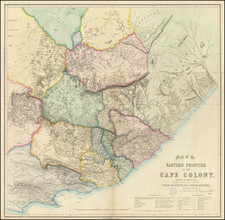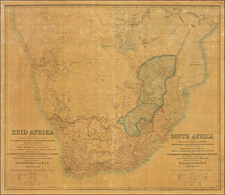Search
The following is excerpted from Eli Lienbenberg's paper on Henry Hall and his maps.
In 1828, the death of his father compelled him to seek work in order to support his financially embarrassed family.
In 1839, after having worked for a builders firm for nine years, Hall entered the Government Service as Foreman of Works in the Royal Engineer Department. His appointment was greatly promoted by the fact that he gained first place in a competitive examination with eighteen other candidates, and in 1842 he was ordered to the Cape Colony.
Hall served on the Eastern Frontier during the Frontier Wars of 1846 and 1851-52, first in Grahamstown and later in Fort Beaufort before moving back to Grahamstown. In 1852, Hll returned to England for health reasons where he was employed in the Office of the Inspector-General of Fortifications until he returned to Cape Town in 1853 at his own request.
In 1858 he was promoted to the rank of Clerk of Works of the first class after which his designation was “Clerk in charge of Royal Engineer Department”. In 1860, he was requested to finally return to England as the Cape was not considered a station for officers of his class.
During his stay in South Africa Hall contributed richly to the scientific and cultural life of the mid-nineteenth century Cape. As engineer he was actively involved in the erection of fortifications on the Eastern Frontier and in later years he supervised the building of several public buildings in Cape Town, amongst which the current South African Museum and National Library.
He was also a competent and avid writer who regularly contributed publications and translations of either a scientific or literary nature to the Eastern Province Monthly Magazine and the Cape Monthly Magazine. In June 1860, prior to his final departure from Cape Town, the Cape Parliament voted him a testimonial of £100 in recognition of his services to
public life in general.
Attached to the Portsmouth Royal Engineer Office for some time, he moved to London after his retirement where he died in 1882.


